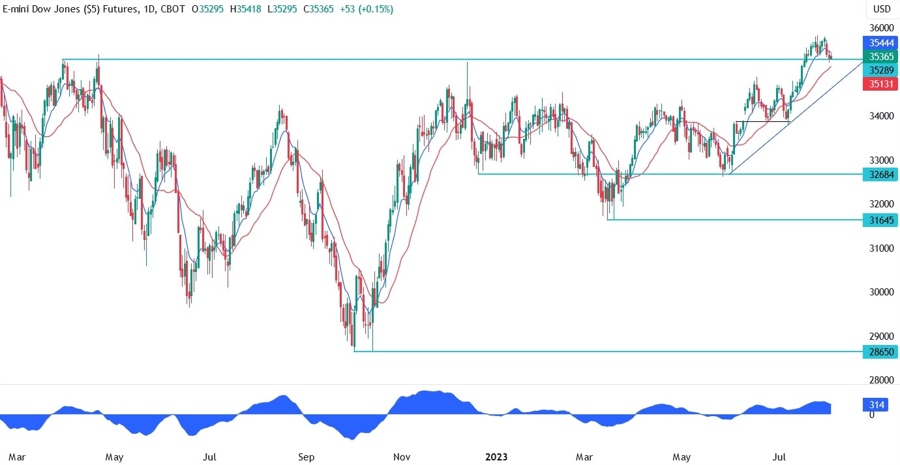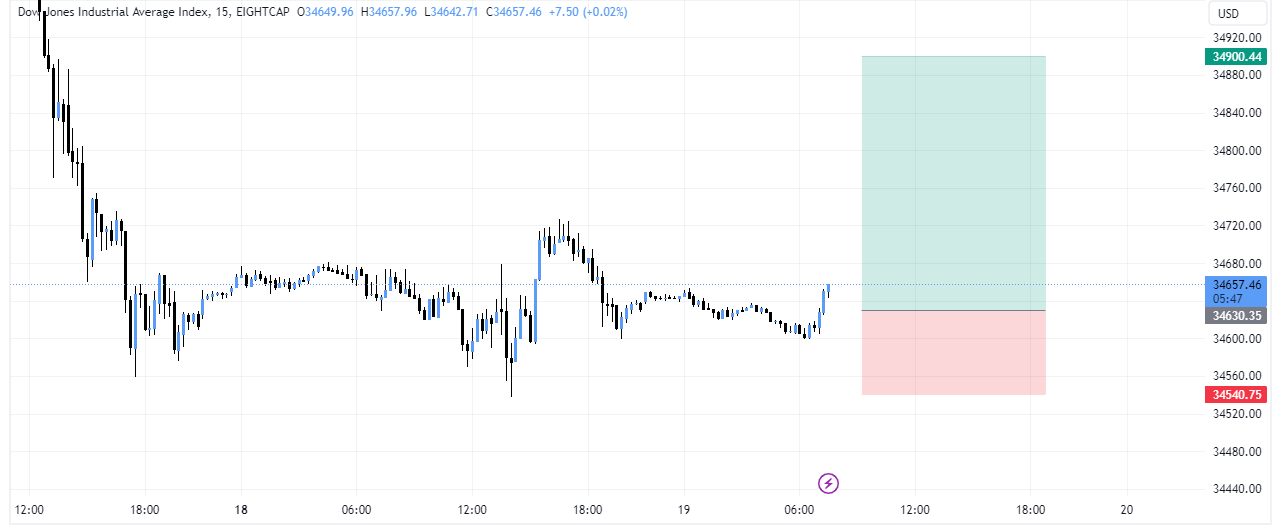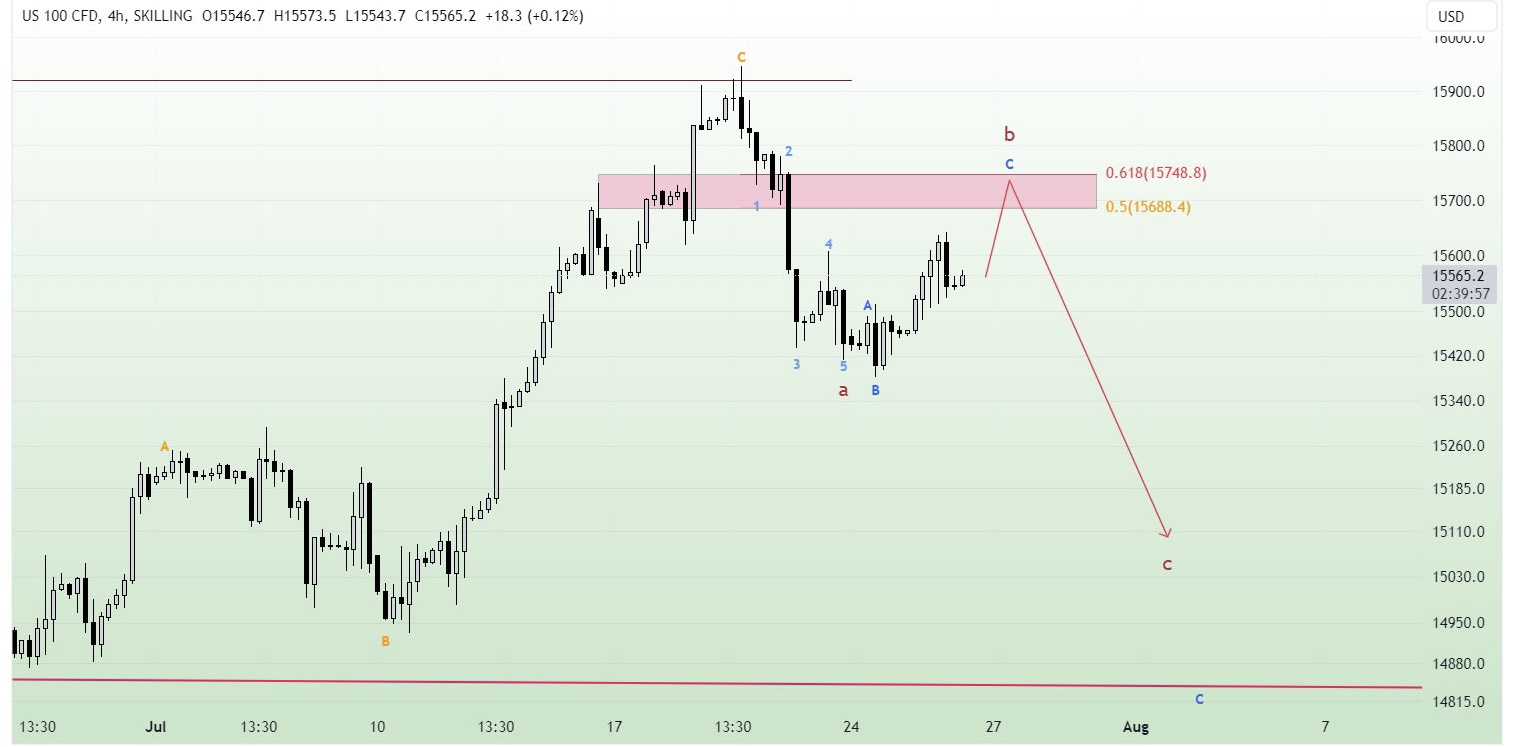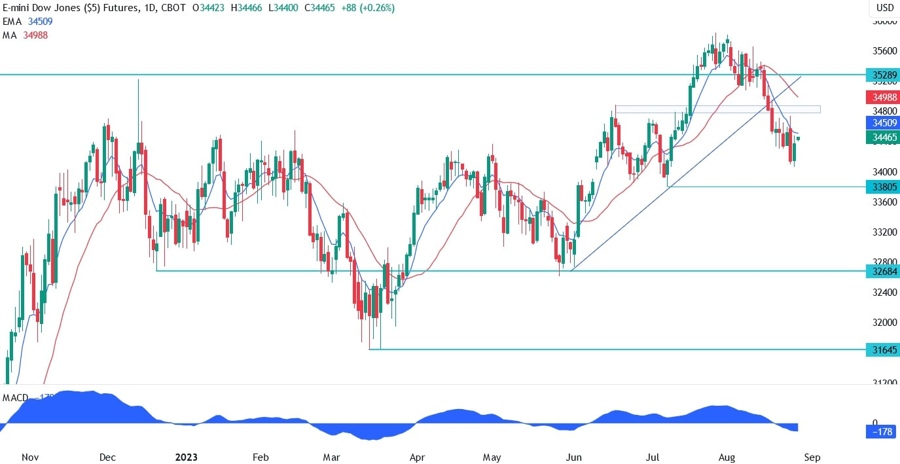FTSE MIB-FTSE MIB 40
Parent Index
NA
Indices informations
Listed Exchanges
| Italian Stock Exchange |
Related Instuments
| N/A |
Sector Represented
| Electricity |
| Health Care |
| Financial Services |
| Banks |
| Oil & Gas Producers |
Indices
- BSE SENSEX
- CAC 40
- CBOE NASDAQ-100 Volatility Index (VXN)
- CBOE Volatility Index (VIX)
- China50-FTSE China A50 Index
- DAX
- DAX PERFORMANCE-INDEX-GDAXI
- DE40-Germany 40 Index DAX
- Dollar Index USDX-DXY-DX-Dixie
- Dow Jones Industrial Average-DJIA
- EURO STOXX 50 SX5E
- FTSE 100 Index-UK100 Index
- Germany 30
- Hang Seng Index
- IBEX 35-Spain 35
- NASDAQ Composite
- NASDAQ-100
- Nikkei 225
- Russell 2000 Index
- S&P/ASX 200
- Singapore Blue Chip Index-STI
- Swiss Market Index (SMI) Switzerland Blue Chip Index
- TecDax Price Index
- TECHDE30-Germany Tech 30 Index
- US Tech 100 Index UT100
- US2000-US Small Cap 2000 Index
- US30-US Wall Street 30 Index
- US30M- US Wall Street 30 Index M
- US500-S&P 500 (GSPC, INX, SPX)
- US500-US SPX 500 Index
- US500M-S&P 500 Mini
- All Ordinaries
- Amsterdam Exchange Index AEX index
- ATX-Austrian Traded Index (ATX)
- BEL 20
- BELEX15
- BIRS
- BIST-Borsa Istanbul
- CROBEX
- EGX 30 Index Egypts Leading Stock Market Index
- FTSE All-Share Index
- FTSE Bursa Malaysia Index-KLCI Index
- FTSE MIB-FTSE MIB 40
- Índice Bursátil Caracas (IBC)
- Índice Bursátil de Capitalización-The General Index
- Indice de Precios y Cotizaciones
- KOSPI
- KSE 100 Index
- MDAX
- MERVAL
- MICEX-The MOEX Russia Index
- OBX Index
- OMX Copenhagen 20 (OMXC20)
- OMX Helsinki 25 (OMXH25)
- OMX Stockholm 30 (OMXS30)
- PSE Index (PSEi)
- PSI20-PSI-20
- S&P/NZX 50 Index
- S&P/TSX 60
- S&P/TSX Composite Index
- S&P/TSX Venture Composite Index
- SOFIX
- SSE Composite Index (上证综指) Shanghai Composite Index
- Straits Times Index (STI)
- SZSE Component Index (深证成指)
- TA-125 Tel Aviv 125 Index
- Taiwan Capitalization Weighted Stock Index (TAIEX)
- The Indice de Precio Selectivo de Acciones- IPC
- CBOE NASDAQ-100 BuyWrite Index (BXN)
- Hang Seng China H-Financials Index
- IBOVESPA-The Bovespa Index-Brazil Stock Exchange Index
- NASDAQ Financial-100
- SDAX – Small cap
- TecDAX
- aaa
- Amex Gold BUGS Index
- Amex Oil Index
- AScX index – Small cap
- ASE Weighted Index
- Athex 20
- Barrons 400 Index
- BELEXline
- BET-10
- BSE DCI
- BSE FCI
- BUMIX – Mid cap
- BUX – Large cap
- CA60-Canada 60 Index
- CAC All Share
- CAC All-Tradable
- CAC Large 60
- CAC Mid & Small
- CAC Mid 60
- CAC Next 20
- CAC Small
- Capital Markets Index
- CASPI
- CBOE DJIA BuyWrite Index (BXD)
- CBOE S&P 500 BuyWrite Index (BXM)
- CBV Index
- CBV Real Estate Index
- CECEEUR
- Central European Blue Chip Index – Regional large cap
- ChinaH-Hong Kong China H-shares Index
- COLCAP
- Colombo Stock Exchange Sector indices (CSE Sectors)
- CROBIS
- CSC X
- CSE 30
- CSE50
- CSI
- CSI 100 Index (中证100指数)
- CSI 300 Index (沪深300指数)
- Dow Jones Global Titans 50
- Dow Jones Transportation Average
- Dow Jones Utility Average
- DSE
- DSEX
- DSM200
- EGX 100 Index
- EGX 50 Index
- EGX 70 Index
- ERS10
- FIRS
- FT 30 Index
- FTSE 350 Index
- FTSE AIM All-Share Index
- FTSE AIM UK 50 Index
- FTSE All-World index series
- FTSE Fledgling Index
- FTSE Italia Mid Cap
- FTSE MID 250 Index
- FTSE SmallCap Index
- FTSE techMark Index
- FTSE/Athex Large Cap
- FTSE/JSE All Share Index
- FTSE/JSE Top 40 Index
- FTSEurofirst 300 Index
- FTSEurofirst Euro Supersector Indices
- GSE All-Share Index
- Hang Seng China Enterprises Index
- Hang Seng China-Affiliated Corporations Index
- HK50
- IDX Composite
- IGBC
- IPSA
- ISEQ 20-The Ireland Overall Stock Exchange Index-ISEQ20
- IT40-Italy 40 Index
- Jakarta Islamic Index (JII)
- Jamaica Stock Exchange (JSE)
- KASE
- KMI 30 Index
- KOSDAQ
- KSE All Share Index
- KSE-30 Index
- Kuala Lumpur Composite Index
- LASI
- LQ-45
- LuxX Index – Luxembourg Stock Exchange
- MADEX index
- Madrid Stock Exchange General Index
- MASI index
- MESDAQ
- MIDDE50-Germany Mid 50 Index
- MIDDE60-Germany Mid 60 Index
- Milanka Price Index (MPI)
- MSCI EAFE
- MSCI GCC
- MSCI Hong Kong Index
- MSCI World
- MSM-30
- NEPSE Index – Nepal Stock Exchange
- NETH25
- NIFTY 100 LOW VOLATILITY 30
- NIFTY 200
- NIFTY ALPHA 50
- NIFTY BANK
- NIFTY CPSE
- NIFTY ENERGY
- NIFTY FINANCE
- NIFTY FMCG
- NIFTY INDIA CONSUMPTION
- NIFTY INFRA
- NIFTY IT
- NIFTY MEDIA
- NIFTY METAL
- NIFTY MIDCAP 100
- NIFTY MIDCAP 50
- NIFTY MIDCAP LIQUID 15
- NIFTY MIDSMALLCAP 400
- NIFTY MNC
- NIFTY Next 50
- NIFTY PHARMA
- NIFTY PSE
- NIFTY PSU BANK
- NIFTY PVT BANK
- NIFTY REALTY
- NIFTY SERV SECTOR
- NIFTY SMALLCAP 100
- NIFTY SMALLCAP 250
- NIFTY SMALLCAP 50
- NIFTY100 EQUAL WEIGHT
- NIFTY100 LIQUID 15
- NIFTY200 QUALITY 30
- NIFTY50 EQUAL WEIGHT
- Nor25-Norway 25 Index
- NSE 30 Index
- NSE All Share Index
- NSE NIFTY 50
- NYSC Arca Major Market Index
- NYSE American Composite Index
- OMX Iceland 15 (discontinued)
- OMX Iceland 6
- OMX Stockholm PI (OMXSPI)
- OMX Vilnius (OMXV)
- OTCM QX ADR 30 Index
- Palisades Water Index (ZWI)
- PFTS index
- Philadelphia Gold and Silver Index
- PHLX Semiconductor Sector
- PSE All Shares Index
- PSE Financials Index
- PSE Mining and Oil Index
- PSI/GERAL
- PX Index
- RTS Index (RTSI)
- Russell 1000
- Russell 2500
- Russell 3000
- Russell MidCap
- Russell Small Cap Completeness
- S&P 100
- S&P 1500
- S&P Asia 50
- S&P BSE 500
- S&P Europe 350
- S&P Global 100
- S&P Global 1200
- S&P Latin America 40
- S&P MidCap 400
- S&P MidCap 400/BARRA Growth
- S&P MidCap 400/BARRA Value
- S&P SmallCap 600
- S&P SmallCap 600/BARRA Growth
- S&P SmallCap 600/BARRA Value
- S&P Vietnam 10 Index
- S&P/ASX 20
- S&P/ASX 300
- S&P/ASX 50
- SA40-South Africa 40 Index
- SBF 120
- SE30-Sweden 30 Index
- SET Index
- SET100 Index
- SET50 Index
- Slovak Share Index
- SMI Expanded
- SMI MID
- SPBLPGPT
- SSE 180 Index (上证180指数)
- SSE 50 Index (上证50指数)
- STOXX Europe 600
- SWI20-Switzerland 20 Index
- Swiss Leader Index (SLI)
- Swiss Performance Index (SPI)
- SZSE 100 Index (深证100指数)
- SZSE 200 Index (深证200指数)
- SZSE 300 Index (深证300指数)
- TA-35 Index
- TA-90
- Tadawul
- TEDPIX
- TEPIX
- The Global Dow
- The GSE Composite Index.
- THETAUSD Theta Network Token vs US Dollar
- TOPIX
- Trinidad and Tobago Stock Exchange (TTSE)
- UBS 100 Index
- Value Line Composite Index
- VN Index
- WIG-Warszawski Indeks Giełdowy
- WIG30
- Wilshire 4500
- Wilshire 5000
- Zimbabwe Industrial Index
- Zimbabwe Mining Index
The FTSE MIB Index: A Comprehensive Guide
The FTSE MIB Index, also known as FTSE Milano Indice di Borsa, is the benchmark stock market index for the Italian equity market. It represents the performance of the top 40 companies listed on the Borsa Italiana, the country’s primary stock exchange located in Milan. This article aims to provide you with a comprehensive understanding of the FTSE MIB Index, its composition, calculation methodology, and significance in the financial world.
Composition of the FTSE MIB Index
The FTSE MIB Index consists of the 40 largest and most liquid stocks traded on the Borsa Italiana. These stocks encompass various sectors, including finance, energy, telecommunications, manufacturing, and more. Some of the prominent companies included in the index are Eni, Intesa Sanpaolo, UniCredit, ENEL, and Telecom Italia.
The weightings of individual stocks in the index are determined based on their free-float market capitalization. The higher the market capitalization of a company, the greater its influence on the index’s movements. This ensures that the FTSE MIB Index accurately reflects the overall performance of the Italian stock market.
Calculation Methodology
The FTSE MIB Index is calculated using a modified market-capitalization-weighted methodology. The prices of the constituent stocks are multiplied by their free-float market capitalization and then adjusted for any corporate actions, such as stock splits or dividends. The resulting figures are used to calculate the index value, which is expressed in points.
The index is rebalanced quarterly to account for changes in the composition of the Borsa Italiana. If a company no longer meets the eligibility criteria, it may be replaced by another stock that fulfills the requirements. The rebalancing process ensures that the FTSE MIB Index remains representative of the Italian stock market’s current state.
Significance of the FTSE MIB Index
The FTSE MIB Index serves as a barometer of the Italian stock market’s overall health and provides insights into the country’s economic performance. Investors and financial professionals closely monitor its movements to gauge investor sentiment, assess market trends, and make informed investment decisions.
Additionally, the FTSE MIB Index is frequently used as an underlying asset for derivative products, such as exchange-traded funds (ETFs) and futures contracts. These instruments allow investors to gain exposure to the entire index or specific sectors within it, providing opportunities for diversification and risk management.
Conclusion
The FTSE MIB Index plays a crucial role in Italy’s financial landscape, representing the performance of the largest companies on the Borsa Italiana. Its composition, calculation methodology, and significance make it an important benchmark for investors and a widely followed indicator of the Italian stock market’s health. By tracking the movements of the FTSE MIB Index, investors can gain valuable insights into the overall performance of the Italian equity market and make informed investment decisions.
FTSE MIB Key Data
The FTSE MIB is the primary stock market index for the Italian equity market. It represents the top 40 companies listed on the Borsa Italiana based on market capitalization. Tracking the performance of the FTSE MIB is crucial for investors, analysts, and financial professionals looking to gauge the overall health and direction of the Italian economy.
Components
The FTSE MIB index includes companies from various sectors, including banking, energy, telecommunications, manufacturing, and more. Some prominent constituents of the index include Enel, Intesa Sanpaolo, Eni, UniCredit, and Telecom Italia.
Market Capitalization
Market capitalization refers to the total value of all outstanding shares of a company’s stock. The FTSE MIB index is weighted by market capitalization, meaning that larger companies have a more significant impact on the index’s performance. As of [current date], the total market capitalization of all the companies in the FTSE MIB is [insert value].
Index Calculation
The index is calculated in real-time, taking into account the price and number of shares outstanding for each constituent company. The base value of the FTSE MIB was set at 10,000 on December 31, 2003.
Investment and Trading Opportunities
The FTSE MIB provides investors with opportunities for both long-term investment and short-term trading strategies. Long-term investors can use the index as a benchmark to assess the performance of their Italian equity holdings. Short-term traders can take advantage of price fluctuations in individual stocks or the index itself.
Risk Factors
While the FTSE MIB represents the top Italian companies, it is important to note that investing in individual stocks or indices always carries a certain level of risk. Factors such as economic conditions, political instability, and global market trends can all impact the performance of the FTSE MIB.
Tracking the FTSE MIB
There are various ways to track the FTSE MIB index. Financial news websites, stock market apps, and online trading platforms provide real-time updates on the index’s performance. Additionally, financial data providers offer historical data, charts, and analytical tools for in-depth analysis.
Conclusion
The FTSE MIB is a vital indicator of Italy’s equity market performance. Investors and professionals rely on its key data to make informed decisions about their investment strategies. By tracking the FTSE MIB, individuals can gain valuable insights into the overall health and direction of the Italian economy.
Fundamental Summary
- Coming soon!!










